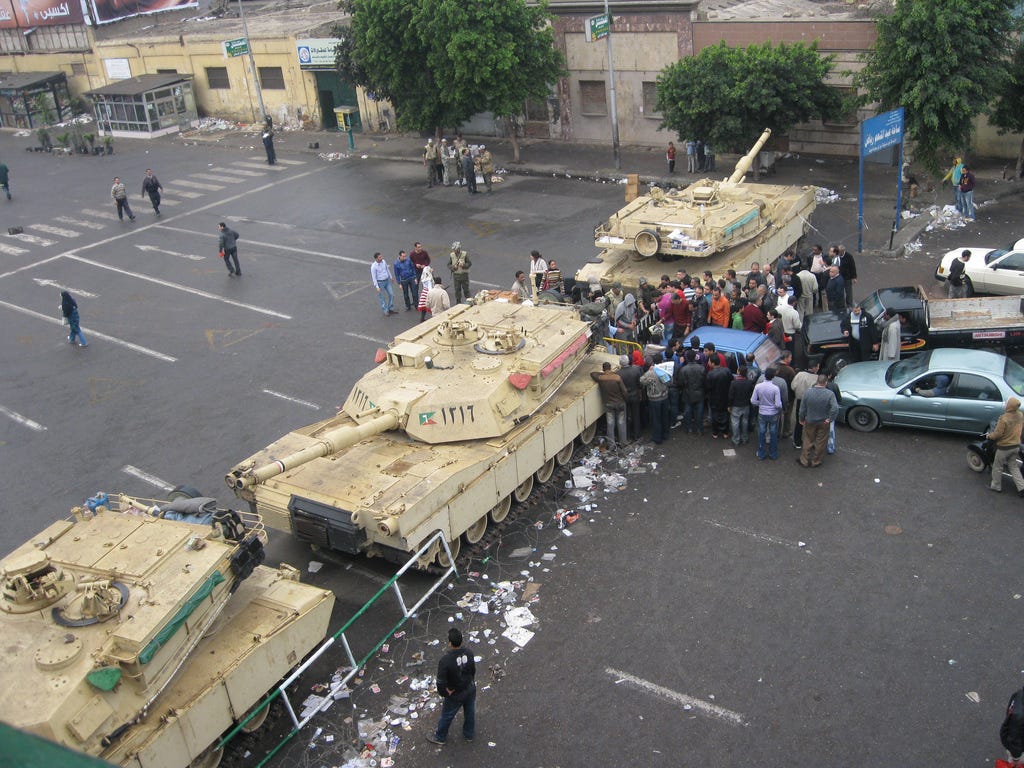Paving the Road to Martial Law
How Trump’s New Executive Order Echoes History’s Darkest Turns
TL;DR: This executive order isn't just about fighting crime — it's about laying legal and structural groundwork for martial law. History shows that when regimes militarize police, dismantle local resistance, and criminalize dissent, democracy doesn't disappear overnight — it erodes step-by-step.

On April 28, 2025, Donald Trump signed a sweeping executive order titled “Strengthening and Unleashing America’s Law Enforcement to Pursue Criminals and Protect Innocent Citizens.” To the casual observer, it reads like a routine "law and order" measure. But beneath the surface, this document is not just about empowering police — it’s about shifting the legal and institutional groundwork toward something far more dangerous: martial law in all but name.
What the Order Actually Does
The executive order:
Grants legal immunity to officers accused of misconduct.
Calls for the rescission of local consent decrees that limit police behavior.
Directs the military and DHS to supply weapons, training, and potentially personnel to local law enforcement.
Demands prosecution of public officials who allegedly obstruct police or implement equity policies that "discriminate" against officers.
Activates Homeland Security Task Forces to coordinate and advance these objectives nationwide.
Together, these measures strip away checks and balances and transform law enforcement into a federally coordinated, militarized tool of political control.
This Isn’t Just “Tough Policing” — It’s Pre-Military Rule
Throughout modern history, authoritarian regimes have followed a playbook: erode civil liberties, neutralize local governance, militarize police, and criminalize dissent. These aren’t hypothetical dangers. The U.S. is now walking a path paved by historical precedent:
Germany (1933):
After the Reichstag Fire, Hitler declared a national emergency, passed the Enabling Act, and centralized policing under SS control. Judges lost autonomy. Dissenters disappeared. Mass repression began before any formal declaration of martial law.
Sound familiar? The new EO demands federal override of local legal checks and immunizes state actors from liability — echoing Germany’s playbook of "legal" terror.
Chile (1973):
Before the military coup, Chilean institutions were reshaped to give law enforcement free rein under the guise of “order.” Once Pinochet seized power, martial law formalized what was already in practice: political purges, secret police, and prison camps.
Sound familiar? This EO directs the DOJ to investigate and potentially jail officials who obstruct law enforcement — a framework that can silence mayors, governors, and reformers alike.
Philippines (1972):
Ferdinand Marcos declared martial law citing rising crime and communist threats. Civilian rule was suspended, the press silenced, and military-police forces patrolled neighborhoods with impunity.
Sound familiar? Trump’s EO blurs the line between military and civilian roles, and empowers DHS and DOJ to “coordinate” local enforcement — a hallmark of martial governance.
Turkey (2016):
After a failed coup, Erdogan declared a state of emergency and purged judges, teachers, police, and opposition members. Military equipment and internal security merged into a powerful suppression tool.
Sound familiar? The EO demands increased military aid and surveillance capacity for police while criminalizing resistance from state and local actors.
What Comes Next
This executive order may not declare martial law, but it prepares the field:
It builds immunity for the enforcers.
It dismantles local resistance.
It militarizes domestic policing.
And it threatens dissenters with prosecution.
What’s left to do? Declare a “national emergency.” The rest is already in place.
Why This Matters
Martial law isn’t always announced with tanks in the streets. Sometimes, it creeps in through memos and executive orders — with patriotic names and promises of public safety. But history teaches us that once these powers are consolidated, they are not easily given back.
If Americans don’t recognize the warning signs now, the next phase — from protest suppression to open repression — may be irreversible.
The time to resist this erosion isn’t after the declaration of martial law — the time is now.


